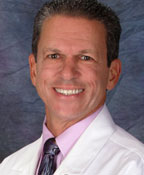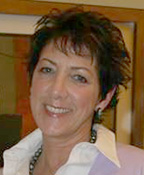 |
|
Harvey Silverman, DMD
|
In the last edition of Silverman On Smiles: Cosmetic Dentistry SOS,I said that I would share with you a simple form that helps you determine what your patients want to change about their smile. While that sounds simple enough, if a “form” could do all of that, more dentists would provide elective cosmetic dentistry than they already do. Taking your cosmetic dentistry practice to the next level requires more than just a form. Let me share with you the approach I teach other dentists during my one day and 2 day regional and on-site Cosmetic Dentistry Boot Camp Programs. See if this approach fits your style as well.
Do Patient Education Material Drive Consumer Awareness?
Before I tell you about the form, let’s consider how effective patient education materials are in stimulating interest in smile enhancement services. Will they motivate your patient to ask if he or she is a candidate for cosmetic dentistry? To a limited degree, yes, they will. However, in the offices I coach on cosmetic dentistry, we found that relying too heavily on patient education materials isn’t the answer.
If you go back several years in time, developing your cosmetic dental practice seemed analogous to the famous line in the movie, Field Of Dreams where the profession thought we simply had to “build it and they will come.” Placing a brochure, poster or video in the office reception area, with a caption that said, “Wouldn’t you like to smile like this too?” elicited interest. It still does. While many dentists still place brochures, posters and DVDs in their office, and there is absolutely nothing wrong with that, I have found that it cannot be counted on as the driving engine if your goal is to take your cosmetic practice to the next level.
Your team’s knowledge, communication skills and sincere belief in your talents and artistic skills will be the most effective driving engine. A cosmetically trained team will be the locomotive to drive the train. However, some dentists consider cosmetic dentistry to be low hanging fruit. It can be if you know how to harvest it. Best of all, the beneficiary of this is your patient, who can now have his/her dream smile.
For example, over the years, you probably have seen many patients who have literally brushed their enamel away at their gum line from being too zealous or using the wrong type of toothbrush. Whatever the cause, it is a problem that needs to be addressed and can be included in your smile evaluation process.
Let me suggest that one of the simplest ways to expand your cosmetic dentistry practice is to expand your patient assessment from restorative/health issues to their aesthetic dental restorative needs. As you do, you will find many patients looking for a noninvasive veneer solution to restore and revitalize their smile.
In the case of the patient who brushes too aggressively and creates toothbrush abrasion defects by the gum line—we often perceive this as being a restorative case that could be treated with a Class V composite. I would suggest you probably see patients with this type of problem every day.
However treating these cases with Class V composites can be challenging. Retention can sometimes be frustrating for both the patient and for you. If you start to think of simple restorative cases such as this as an opportunity to restore the defect using a noninvasive, in-office LifeLike Veneer, you will achieve greater resistance to applied stress—resulting in greater retention and enhanced aesthetics. In the case below, the patient previously had her teeth restored with Class V composites by another dentist that failed. Instead of replacing it with new Class V composites, I placed LifeLike Veneers to restore and enhance her smile and combined that with the EasySmile Tooth Whitening System. EasySmile is a simplified high concentration in-office tooth whitening system I developed that requires no isolation and is indicated for first-time users who have mild to moderate stains. With EasySmile Tooth Whitening I am able to achieve from 4 to 6 shades of color improvement in about 30 to 45 minutes without sensitivity—and the patient was very pleased with the final outcome. EasySmile is also an excellent “boosting” system for anyone who previously whitened their teeth and wants to maintain the brightness of their smile without the hassles or expense associated with conventional in-office tooth whitening procedures.
|
Other Targeted Systems Help Determine Cosmetic Wants
Today dentists can use various smile analysis tools and forms to learn of cosmetic changes patients would like to have done. This additional information is one of the first steps in determining the best cosmetic treatment for your patient. But the smile analysis form itself is only an important first step and not a panacea when it comes to determining elective cosmetic dentistry treatment plans. Additionally there are subtle differences that allow one form to be more effective than another. There is a reason why I feel that way. Let me explain.
Back in the early 1980s when veneer technology was still in its infancy, I was fortunate where dental laboratories and manufacturing companies asked me to present hands-on and didactic programs to train dentists on tooth bonding and porcelain veneers. This technology was exciting to the dental profession. However, no one really knew how to create patient interest in this relatively new category. We needed a vehicle to do that. One unbelievable suggestion I heard at a continuing education program was to ask your patient, “Does that ugly tooth bother you?” That did not seem professional or very tactful to me. I thought there had to be a better way. As a result of this I developed one of the original smile analysis forms in 1983.
During the subsequent years I learned that there was an art and science to making a smile analysis form more effective. While all smile analysis forms may look alike, they really aren’t. There are subtle differences.
Some of these forms are poorly worded, making patient’s feel self-conscious about admitting to any changes they might want. Other forms may even make your patient feel as you are trying to “sell” something to them. That is certainly not your goal or the impression you want to create. That may also be a reason why some dentists feel uncomfortable marketing cosmetic dentistry. From a professional perspective many dentists still aren’t even comfortable with the word marketing.
I do have a word of advice. Don’t let preconceived ideas on marketing hinder your efforts to do effective internal marketing. Marketing is really not a dirty word. When done professionally and ethically, it will inform, educate and motivate patients about how they can benefit from advances in technology. There’s no selling involved. That’s why every suggestion made in this series is based upon the Silverman Institute of Cosmetic Dentistry’s No Selling program. Our 24 Hour Cosmetic Dental Practice Transformation Program has always been based on “no selling.” If you share those same values, you will find that ethical internal marketing programs will fit with your comfort level and you can still have a thriving elective cosmetic dental practice.
If you would like to listen to how one cosmetic restorative dentist whom I trained describe how he overcame his concerns about marketing being a “dirty word”, please go to the following link drharveysilverman.com/institute.
I believe that you might find some similar parallels in his experience to your practice. Hopefully you, too, will be able to learn from his experience. If you do, you will then feel far more comfortable fine-tuning your internal marketing systems to benefit your patients. The goal is to inform, educate and motivate your patient population to become aware of new services that can truly make a difference/positive impact on their life. There is no reason to hesitate when your goals are altruistic and your patients are the beneficiaries of your noble efforts.
Getting To Yes
Look at the different smile analysis forms that are commercially available and use the one that helps you gather the most valuable input from your patient so you can effectively co-diagnose his/her cosmetic needs. Throughout the years coaching cosmetic dentists I monitor forms to determine what works and what needs to be tweaked. Interestingly enough, I found that some forms do not create the comfort level that helps patients confide the changes they would like to have done without feeling vain. Make sure your form does. Here’s a suggestion: If you are not discovering at least one cosmetic problem in up to 70% of the smile analysis forms your patients fill out, than the form probably isn’t asking the right questions or helping create the comfort level you need.
Remember, the smile analysis form only helps determine what patients want to change. First the patient must be a candidate for that service. Additionally you have to be a good aesthetic dentist, stay up to date on the advances in technology and have an outstanding team to help inform, power, educate and motivate patients about the benefits of cosmetic dentistry. While the smile analysis form creates team awareness of your patient’s desires, it is only one of the many tools needed that comprise your entire cosmetic management system. If you want to use the form I use, please go to my website and download the form. It can be found on drharveysilverman.com and then simply click on the dentist link. There is a form you can tailor to your practice on that link. In future articles I will share other components and tools that will benefit your cosmetic practice.
I hope you and your team are excited about preparing to relaunch your cosmetic dentistry program and take it to the next level. One of the keys is to fine-tune your co-diagnosing skills: Learn what your patients want to change and then provide your patients with the optimal cosmetic dentistry to have a brighter, more self-confident smile. If you have any questions, feel free to contact me or let me know if I can help you take your cosmetic dentistry practice to the next level.
Bio
Dr. Silverman has been successfully coaching dentists on how to expand their cosmetic dentistry practice since 1984. If you want to take your cosmetic practice to the next level or want more information about the Silverman Institute’s 24 Hour Cosmetic Transformation Program, please contact him at (216) 256-4599 or e-mail him at incrediblesmiles@aol.com.












